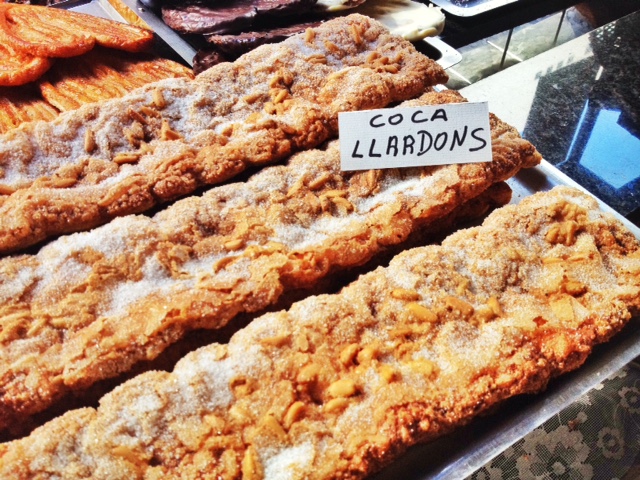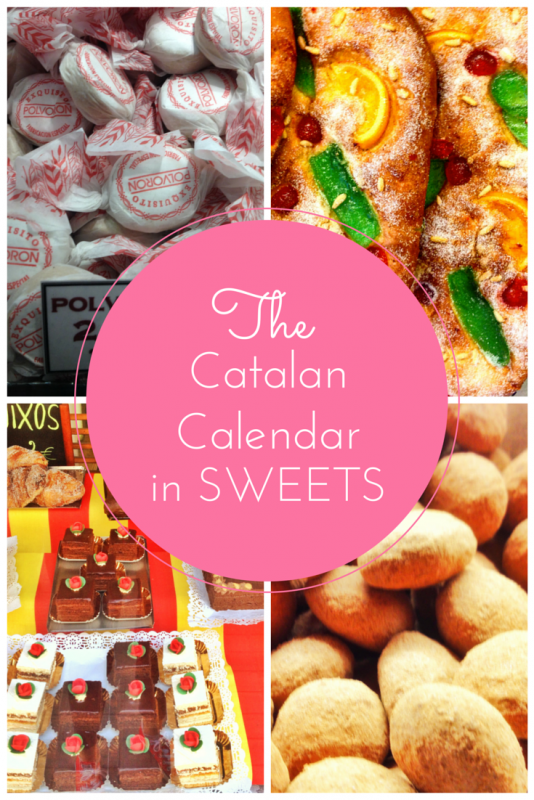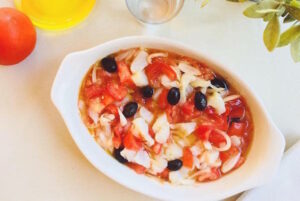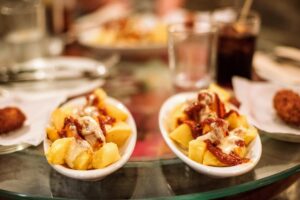Last Updated on November 17, 2025 by Emma Fajcz | Published: September 25, 2017
We love the huge selection of sweets in Barcelona! However, did you know that you can follow the calendar in Spain through its sweets?
Following the days, weeks and months of the year can be a pretty fun pastime for a sweet tooth in Spain. Beyond the usual croissants, xuixos and other treats, pastry shops work in a seasonal way by following the age-old Catholic calendar.
Year after year, the shelves see a rotation of different sweets that reflect a certain holiday or traditional event. Coming to Barcelona in June? You’ll see cocas de san joan everywhere. However, if you are arriving in chilly December, the list is a lot longer of delicious treats to choose from. Follow the calendar in the sweetest way possible, through these delicious Catalan treats!
January
Don’t be surprised to find that we are still loosening the belts long after we’ve made our New Year’s resolutions! The festivities in Spain continue on into the new year for Three Kings Day, which falls on January 6th. Try the tortell de reis, or King’s cake, a round pastry cake stuffed with marzipan and hiding a small figurine and a bean. Whoever finds the figurine is crowned King, whereas the person who finds the bean must pay for the cake. It’s one of our favorite sweets in Barcelona at any time of the year!

February
February is the month that often marks the beginning of Lent. This period also traditionally symbolizes restriction and restraint. Different cultures have different ways of splurging beforehand, and here in Catalonia that comes in the form of a coca de llardons, along with other savory treats!
A coca can be any type of elongated bread or pastry, coming in sweet and savory forms. The coca de llardons is a pastry covered with pork rinds, sugar and pine nuts. Take that for indulgent!
March
March marches on with Lent, as we start to see bunyols de quaresma, literally, Lent fritters, which are covered in sugar and generally come in two forms, donut-shaped, or round and sometimes filled with cream.

April
Perhaps April is one of traditional pastry shops’ most taxing moments. The store windows will be decorated with impressive chocolate sculptures ranging anywhere from €20 to €100! These are called monas de Pascua, which are gifts that godfathers give to their godson or daughter on Easter Day.
May
Though May has no link to any traditional Catholic holiday, pastry chefs often take advantage to get creative in the kitchen and try new recipes. With the extra time on their hands, they will often decorate their regular sweets with Mother’s Day dedications. Any excuse to eat more sweets in Barcelona.
June
June marks the summer solstice, and also one of Catalonia’s most prized holidays, Sant Joan. During this week, we eat tons of coca de Sant Joan, an enormous pastry covered with sugar, pine nuts and candied fruit. It’ s one of the most delicious sweets in Barcelona!

July
July is the month of Sant Cristofòl Day, the patron saint of travelers. Thus, many pastry shops make volants de Sant Cristofòl, a brioche with a cherry in the middle, imitating the horn on a truck, car or other vehicle.
August
As there are no typical sweets in Barcelona for August, we will take this moment to recognize one of our favorite Catalan desserts, mel i mató. This is the simplest dessert out there, made with fresh mató cheese, a Catalan cheese similar to ricotta and is topped with honey and walnuts. Though you can eat it all year-round, we can’t imagine a better time than the hot month of August.

September
September’s sweet may not be linked to the Catholic calendar, but it is equally important and traditional in all of Catalonia. The 11th of September is the Diada, or National Day of Catalonia, an enormous celebration of its culture as well as history. Make sure to grab a piece of red and yellow striped cake, decorated as the Catalan flag.
October/November
Panellets, or little breads, are sweets in Barcelona that are typical of All Saints day, though we tend to see them towards the end of October and throughout November. There are many varieties, but the most typical are made of marzipan and covered in pine nuts. Try making your own with our traditional recipe!
December
What better time of year than the holidays to enjoy loads of traditional Spanish and Catalan sweets? Turró is by far the most famous Christmas sweet nation-wide, also coming in many different versions. Here in Catalonia, we also see a lot of neules, which are delicate cylinder wafer cookies, sometimes covered in chocolate—yum!
Experience Barcelona’s Food Like a Local
Join one of our top-rated Barcelona food tours! With the help of our expert local guides, you’ll get to see, hear, and taste your way through this city and learn about its fascinating history and culture.










Very good choice I would say! I only missed the Crema Catalana o Crema de Sant Josep that you can find all year round but is typical of March. And well, maybe carquinyolis, but I don’t think they really associate with a particular time of the year.
I think there were a couple of typos though (torró, mones). http://www.iec.cat
Interesting and well-written!
Very true Andreu, thanks for the tips! We mentioned mother’s day but forgot about father’s day…how unfair of us!